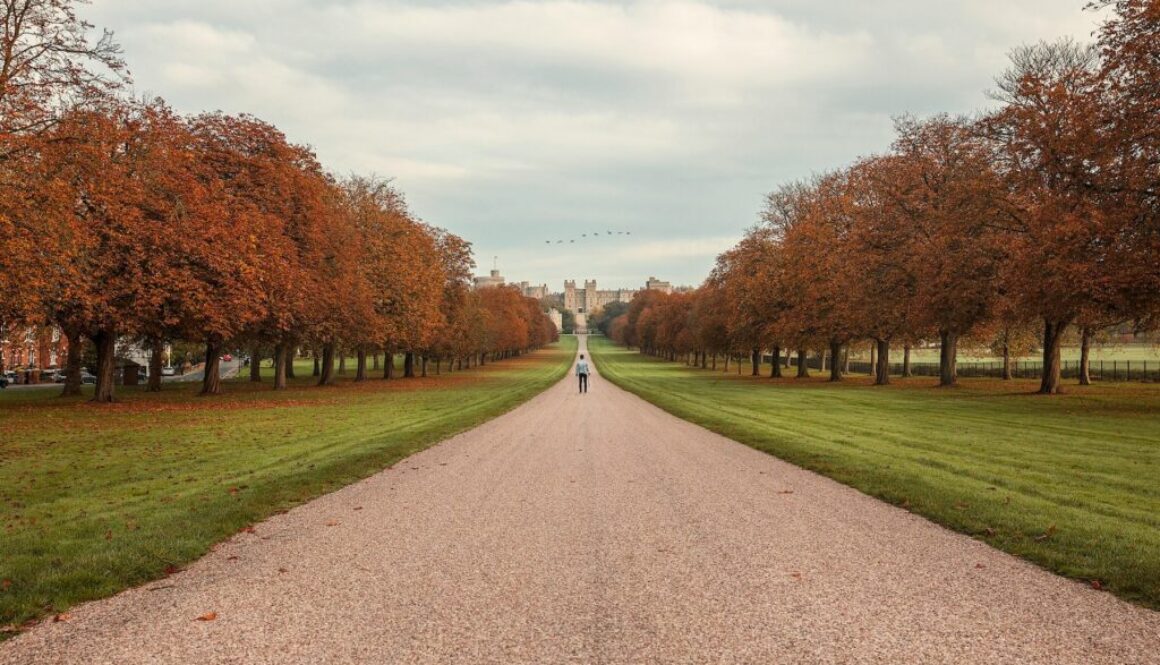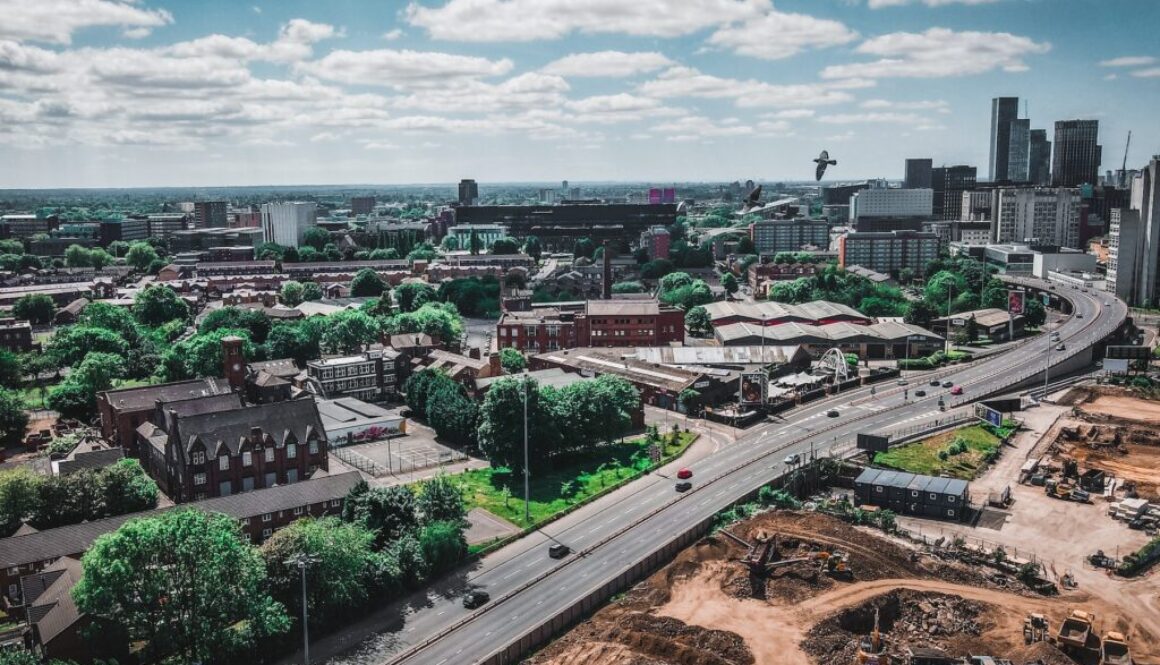What is the Crown Estate and why is the Government bringing forward legislation to reform it?
The Crown Estate is an independent commercial business. It manages a portfolio of land and property that are hereditary possessions of the Sovereign held in right of the Crown. In acquiring, managing, investing and developing its assets the Crown Estate seeks to create prosperity for the nation. How does it do this, and what does this mean for rural communities? Jessica Sellick investigates.
………………………………………………………………………………………………..
The Crown Estate is tasked with focusing on the nation’s long-term, structural challenges. What is it, what does it do, why is the Government reforming it, and what does this all mean for rural communities?
What is the Crown Estate? It is an independent, commercial business that manages a portfolio of land and property in England, Wales and Northern Ireland. Its assets are hereditary possessions of the Sovereign held ‘in right of the crown’. While they belong to the Sovereign for the duration of their reign, currently His Majesty King Charles III, they cannot be sold by him and nor do the revenues from the assets belong to him. The Crown Estate can be traced back to 1760 when King George III handed land and property over to the Government, with the revenue going to the Treasury in exchange for a fixed salary. Present day arrangements are set out in the Crown Estate Act 1961. This established the Crown Estate as a trust estate independent of its two beneficiaries – the Monarch and the Government.
What does it do? Section 1 of the 1961 Act sets out the purpose of the Crown Estate: ‘managing and turning to account land and other property, rights and interests, and of holding such of the property, rights and interests under their management as for any reason cannot be vested in the Crown or can more conveniently be vested in the Commissioners’. The 1961 Act sets out a general duty for the Crown Estate to ‘maintain and enhance the value of its estate and the return obtained from it with due regard to the requirements of good management’, and to ‘pay its net revenue profit each year to the Consolidated Fund’.
The Crown Estate pays its net revenue profit into a consolidated fund at HM Treasury each year [akin to the UK Government having a current account]. HM Treasury is the Crown Estate’s sponsor department and a Framework Document (published in June 2023) sets out the relationship between the two bodies. The Crown Estate generated £1.1 billion net revenue profit for the public finances in the 2023-2024 financial year, and it has paid more than £4 billion into HM Treasury over the last 10-years.
The Crown Estate’s net revenue profit is linked to the Sovereign Grant, money that is paid from the public finances to the King to support him in discharging his duties as Head of State. The size of the Sovereign Grant is usually equal to a prescribed proportion of the Crown Estate’s profit in the financial year two years prior to the year in question. Should the Crown Estate’s profits fall in the reference year, the Sovereign Grant is set at the same level as the previous year. The percentage used to allocate the Sovereign Grant is regularly reviewed – from an initial 15%, it increased to 25% from 2017-2018, and then from April 2024 reduced to 12%. The Crown Estate does not pay the Sovereign Grant directly, the payments it makes into the Consolidated Fund are then used by HM Treasury to pay the Sovereign Grant to the Monarch.
The Crown Estate is managed by a board of Crown Estate Commissioners; and the Crown Estate’s strategy provides the framework that ensures Commissioners are discharging their responsibilities under the Act. The Crown Estate’s strategic objectives are to:
- Be a leader in supporting the UK towards a net zero carbon and energy-secure future.
- Create inclusive communities and through our activities support economic growth and productivity.
- Take a leading role in stewarding the UK’s natural environment and biodiversity.
Today, the Crown Estate property portfolio has an estimated worth of £14 billion, and its net assets are valued at £15.5 billion.
Where does it operate – and how much rural property and land does it manage? The Crown Estate describes itself as ‘a company for the country with land, property and seabed across England, Wales and Northern Ireland’. Its assets include:
- 10 million square foot of prime London real estate.
- 8 million square foot of commercial development space in the regions.
- 200,000 acres of land.
- More than 12,000 kilometres of coastline.
- 2 seabed areas with a combined landmass of England, Wales and Northern Ireland.
‘Spanning urban and rural areas, our portfolio gives us a distinct opportunity to deliver positive outcomes across national priorities such as net zero and nature recovery’, Integrated Annual Report and Accounts 2023/23, page 11.
The Crown Estate’s core activities are focused around:
- Optimising the use of land and capital across its portfolio.
- Leveraging scale and diversity.
- Aligning its operation with customers’ goals.
- Drawing on relationships and unique strengths.
- Investing in data and technology.
The Crown Estate’s strategy is focused on maximising returns to HM Treasury through balancing short-term and long-term financial value; creating greener, healthier places and accelerating renewable technologies; playing a positive role in tackling inequalities and creating inclusive opportunities; and embedding indirect value through activities.
The ‘Windsor & Rural’ portfolio is valued at £1.4 billion and generates £40.1 million in revenue. This part of the business covers The Windsor Estate with revenue generated from visitors, events, filming and forestry. In March 2024, The Royal Farms and Royal Farm Shop were transferred to the Crown Estate. This transfer is expected to increase income in 2024-2025. The Crown Estate also manages a rural portfolio of 185,000 acres across England and Wales comprising 130,000 acres of agricultural farmland and 55,000 acres of upland and commons interests in Cumbria and Wales. The portfolio also includes strategic land, forestry, renewable energy assets, minerals and quarries. It comprises 700 kilometres of publicly accessible footpaths, 3,000 (direct and indirect) jobs and a further 5,000 people directly or indirectly employed through the Windsor Estate and Great Park, as well as 435 homes and 206 community and tourism sites. The Crown Estate describes how:
‘As one of the oldest and largest landowners in the UK, our aim is to be a model of large-scale sustainable, diversified and integrated agricultural and environmental best practice…Our rural strategy is designed to support the UK’s green agricultural transition, supporting both food production and nature. And our work on renewable energy, particularly offshore wind, is contributing to the country’s net zero ambitions’.
The Crown Estate has contracts with managing agents to work with it on its land and property portfolios. Within agriculture, the Crown Estate aims to work closely with farmers to ensure the long-term sustainability of the land they manage. Some examples include:
- 200 kilometres of rural hedgerows and 400 acres of woodland were planted in 2023-2024 with support from the Crown Estate’s £10 million Environment Fund. The Fund is targeted at farmers for ‘no regrets’ nature recovery work. The Crown Estate has committed to establishing over 1,000 acres of new woodlands and 100 miles of new hedgerows by 2025.
- In 2023-2024 the Crown Estate began trialling a contract farming arrangement in the West Midlands. This is piloting lower-carbon techniques with learned shared across the portfolio.
- The Crown Estate is introducing new tenancy agreements to reflect regenerative farming principles to help pivot the rural portfolio to net zero by 2030. This includes the introduction of new Environmental Farm Business Tenancy agreements which are designed to support nature recovery and carbon reduction. These tenancies offer farmers 15-year terms if they adopt a more sustainable farming model. For example, the Crown Estate is working with 20+ farmers on the Devizes Estate to produce an Environmental Plan which will be integral to their new tenancy agreements.
- The Crown Estate is scoping projects to restore carbon-rich habitats such as saltmarshes and peatlands. This also involves looking for opportunities to enhance carbon sequestration and restore marine habitats.
- The Crown Estate is working with its supply chain to promote a ‘Safety First’ approach, with Managing Agents attending a one-day workshop delivered by the NFU and then talking to farmers about how health and safety can enhance what they do.
- Under-used agricultural buildings have been repurposed as offices, workshops and storage facilities.
Strategically, the Crown Estate is focused on the interconnections between climate, nature and people. This includes broadening the datasets used in Rural and Marine activities to establish an enterprise-wide carbon baseline to give better insight into where the Crown Estate can have the bigger impact and influence. The Crown Estate wants 15% of its rural landholding to be dedicated to nature recovery.
Why is the Government bringing forward new legislation governing the Crown Estate? The King’s Speech in July 2024 set out a commitment to bring forward legislation to modernise the Crown Estate’s investment powers and to give the company a new ability to borrow. The Crown Estate Bill is now making its way through parliament and would come into force two months after receiving royal assent. The Bill would amend the Crown Estate Act 1961 by extending the Commissioner’s powers to invest and borrow, increasing the maximum number of Commissioners, and changing the way their salaries are paid. According to the Government, the Bill will ‘modernise the Crown Estate by giving it the powers to borrow in order to invest at a faster pace’. The Crown Estate has welcomed this commitment to modernise its investment powers:
‘These powers will allow us to have an even greater impact across our portfolio and ensure we play our part in supporting the UK’s transition to a decarbonised, energy secure future; nature recovery; regeneration and economic growth; as well as increasing the profit we return to government for the benefit of the nation’s finances’.
A briefing from the environmental coalition Wildlife and Countryside Link in August 2024 recognises the essential role the Crown Estate plays in facilitating the Government’s plans to tackle climate change but argues the Bill is currently a missed opportunity to ensure the Crown Estate also facilitates the Government’s obligations towards the achievement of nature targets under the Environment Act 2021:
‘We are calling for The Crown Estate Bill to be given a nature recovery objective, alongside the ability to invest in the technology, infrastructure and research required to further these aims’.
The coalition also cites the Scottish Crown Estate Act which, since 2019, has placed a duty on the organisation to manage its assets in a way that ‘is likely to contribute to the promotion or the improvement in Scotland of (iv) environmental wellbeing’. In practice it means Crown Estate Scotland must make investment decisions that meet the highest environmental standards.
As the owner of the seabed of England and Wales, the Crown Estate leases out plots of seabed to offshore wind and other developers such as those wishing to build carbon capture infrastructure. As part of its Marine business, the Crown Estate has 36 wind farms operating across its holdings, with a combined capacity of 11.8GW (enough to power 11 million homes). The Crown Estate also launched Offshore Wind Leasing Round 5, which is set to generate up to a further 4.5GW by putting innovative floating wind farms in the Celtic Sea.
In July 2024 the Government announced a new partnership between the Crown Estate and Great British Energy. Under the arrangement, the Crown Estate will establish a new division called ‘Great British Energy: The Crown Estate’ which will:
- Bring forward new offshore wind developments, with the potential to deliver up to 20-30GW of extra offshore wind seabed leases to the market by 2030.
- Stimulate new energy technologies such as floating wind, hydrogen, carbon capture and tidal energy.
- Invest in ports and clean energy supply chains.
- Ensure that future developments have lower risks for developers and enable faster building from leasing.
The Government estimates that the partnership could reduce the time needed to get an offshore wind project delivering power to homes by up to 50%.
There have been calls for the profits from offshore wind projects to be used to improve employment opportunities and supply chains within the energy sector; while others are calling for the profits generated to be devolved. Fishermen in Devon and Cornwall, for example, have expressed concerns that swift policy changes may reduce investment in fisheries management, fleet upgrades and coastal infrastructure and lead the seafood supply chain to potentially collapse. The Cornish Fish Producers Organisation (CFPO) believes that the rush for net zero should not be at the expense of a centuries old industry that plays an equally critical role in the nation’s sustainability. The Crown Estate has confirmed it has already engaged directly with fisheries during its initial consultation period and is seeking views from across the industry and marine stakeholders.
In September 2024 Great British Energy: The Crown Estate published its Considerations for the future of offshore wind and has called on industry and wider stakeholders to help shape its approach to seabed leasing.
What role can the Crown Estate play in rural communities? The Crown Estate takes a long-term view to delivering positive change and recognises that change needs to be carefully managed. However, there can be a lack of public awareness of the organisation’s existence and its work. Within and across its Rural portfolio and rural strategy, for example, what role does (and can) the Crown Estate play in a living, working countryside – beyond viewing its activities within a sector (e.g., agriculture, minerals and mining) or site? While its direct drivers are around maximising financial returns, what direct and indirect benefits and impacts does it have on rural communities (e.g. infrastructure, affordable housing, quality job opportunities, training?) And with new legislation on the way, how can its future activities take account of the needs and interests of rural communities? Watch this space.
…………………………………………………………………………………………………
Jessica is a project manager at Rose Regeneration and a senior research fellow at The National Centre for Rural Health and Care (NCRHC). She is currently measuring the impact of a service that supports patients living with and beyond cancer; and reviewing neighbourhood-based initiatives (NBI). Jessica also sits on the board of a charity supporting rural communities across Cambridgeshire and is a member of her local Patient Participation Group.
She can be contacted by email jessica.sellick@roseregeneration.co.uk.
Websites: http://roseregeneration.co.uk/ https://www.ncrhc.org/
Blog: http://ruralwords.co.uk/
Twitter: @RoseRegen




